#The Tiger of Mysore
Explore tagged Tumblr posts
Text

The Hornet No. 77, dated 27 February 1965. Tiger of Mysore! cover, artist unknown. The Tiger of Mysore also featured in the Sharpe's Tiger novel (as well as dozens of other things probably). DC Thomson.
6 notes
·
View notes
Video
youtube
WHITE TIGER VS BENGAL TIGER
#youtube#Big Cats#Felines#Tiger#White Tiger#Bengal Tiger#Mammal#Carnivore#Animal#wild animal#jungle#Whiter Tiger is colour variant#Mysore Zoo#Nature#Endangered Animals#Asian Animals#Indian Animals
4 notes
·
View notes
Text
Stunning Poses at Mysore Zoo Park
#Animal poses#Animals in India Zoo#Chimpanzee#Elephant Poses#Elephant Trunk#Funny Elephant#Green Snake#Indian Zoo#Indian Zoo Park#Mysore zoo Park#nature photography#Snake Close Shots#Tiger#Tortoise Potrait
0 notes
Text
omg! Tipu's birthday today?!?!
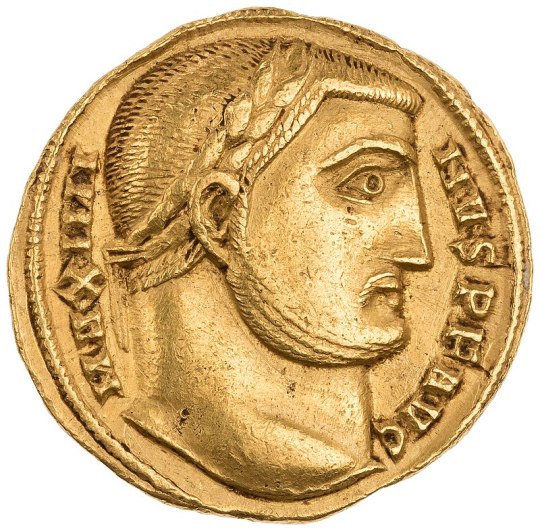
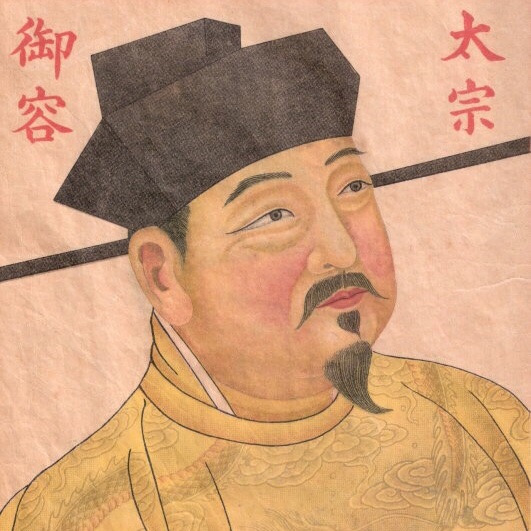
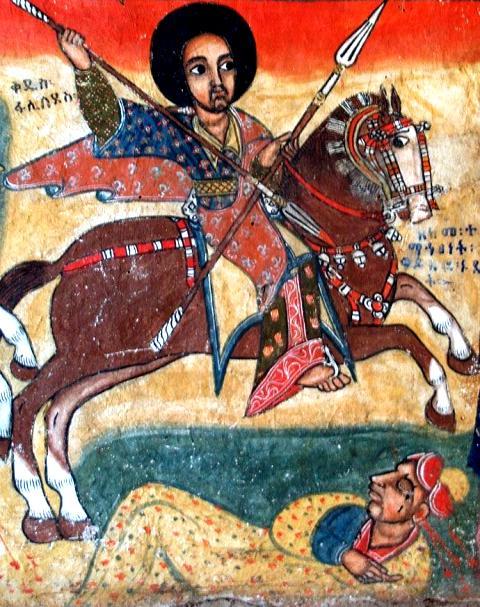
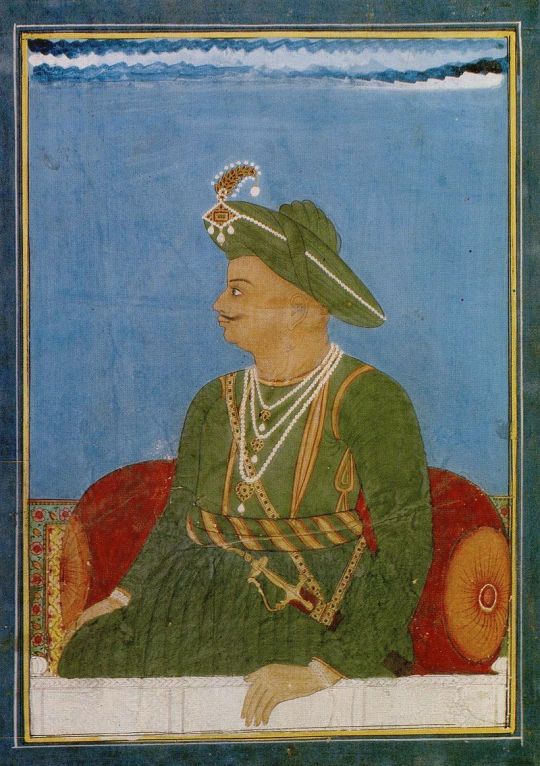
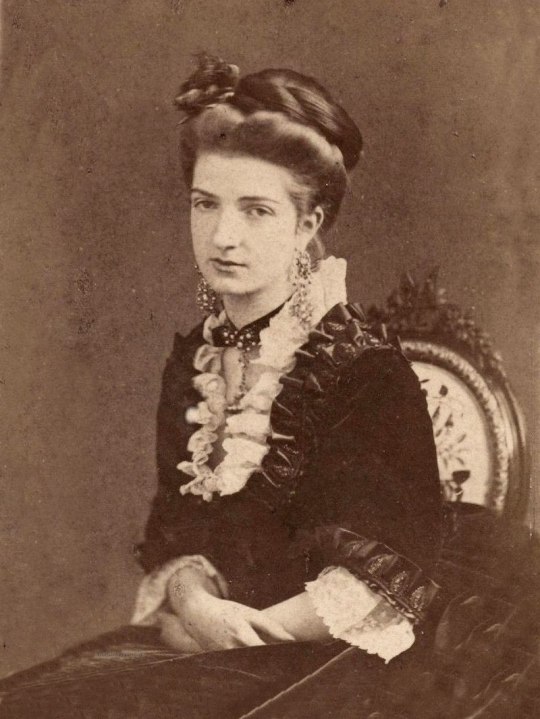





Royal Birthdays for today, November 20th:
Maximinus II, Emperor of Rome, 270
Taizong of Song, Emperor of China, 939
Fasilides, Emperor of Ethiopia, 1603
Tipu Sultan, Ruler of Mysore, 1750
Margherita of Savoy, Queen of Italy, 1851
Maria Letizia Bonaparte, Duchess of Aosta, 1866
Alexandra of Sayn-Wittgenstein-Berleburg, Countess of Pfeil, 1970
Sofia, Princess of Bulgaria, 1999
Umberto, Prince of Bulgaria, 1999
Theodora, Princess of Liechtenstein, 2004
#one of my fav historical characters#that tiger musical instrument in the v&a is such a classic#tiger of mysore#aptly named
11 notes
·
View notes
Text

Woah. Not exaggerating: The very same week you tagged me here, I was submitting a final draft paper about spectacle and British use of animal imagery and caricatures of South Asian resistance, especially on stages and in "ethnographic" exhibitions. Part of this involved the weaponization of spectacle, media, and public display. And part of this involved British imagination of "exotic" animals. And the article shown here kinda invokes both of those subjects.
That afternoon, I had been reading through a 2012 article with new-to-me info about the staging of theatre-esque mass trials/executions of Thugee by British administrators 1820s-1850s. (More on that below.)
In the pictured article/link shown here, similarly, Shanahan describes fig trees and mass hangings of Indian rebels. He lists about a dozen instances of when British authorities used fig trees to perform quasi-ritualized mass executions between 1806 and 1871.
Among them, he notes two in particular:
1857, hanging 144 rebels from a single tree in Nanaro Park at Kanpur (Shanahan cites a T!mes of !nd!a article, which itself cites a history department professor at Christ Church College)
March 1860, hanging 257 rebels from a single tree in Bareilly, Uttar Pradesh, in retaliation for their revolt in May/June 1857, when rallying under Khan Bahadur Khan (Shanahan again cites T!mes of !nd!a, who cite an ancient history and culture professor at Mahatma Jyotiba Phule Rohilkhand University)
---
The same afternoon you tagged me, I was straight-up reading:
Maire ni Fhlathuin, "Staging Criminality and Colonial Authority: The Execution of Thug Criminals in British India." Nineteenth Century Theatre and Film, Volume 37, Issue 1, October 2012.
She "examines the staging and response to the public executions of thugs, focusing on the British authorities' 'scripting' of the execution ritual (as documented in East India Company records and the writings of the officials involved) to include [...] the crowd's appreciation of the eradication of that criminality."
---
British animalization and/or dehumanization in depictions of South Asia, what they both call "interspecies/multispecies empire," more directly explored by Rohan Deb Roy (insects/bugs in India) and Jonathan Saha (elephants/cattle in Burma). But another thing I had been referencing in my own little paper was British fixation on re-enacting the defeat of Indian rebels, which you might especially notice in stage plays about Tipu Sultan (the "Tiger of Mysore" beaten by "the British bulldog," defeated in 1799, who became the central villain/character of multiple spectacular and popular plays in London from 1790s-1830s, to such an extent that British schoolchildren decades later would still understand references to villianous "Tipu"; and historian Daniel O'Quinn, who's written much about British popular discourses about crises in the Age of Revolutions, called the plays comparable to "precinema"; after his defeat, the East India Company could secure sandalwood resources and perform sweeping cartographic surveys for land/revenue administration). Probably worth noting nineteenth-century Britain played host to the explosion of newly-affordable mass-market print media of all kinds; recalcitrant South Asian rebels show up in stage, sportsmen's magazines, travel literature genre, novels, etc.
On the subject of weaponizing newly-emergent media, the author linked/pictured here (Shanahan) too, also lists in his bibliography:
Sean Willcock. "Aesthetic Bodies: Posing on Sites of Violence in India, 1857-1900." History of Photography, Volume 39 (2015), Issue 2, pages 142-159.
Abstract includes: "This article looks at how aesthetic concerns inflected the dynamic of imperial relations during the 1857 Indian Uprising and its aftermath. The invention of photography inaugurated a period in which aesthetic imperatives increasingly came to structure the engagement of colonial bodies with the traumas of warfare in British India. The formal conventions of image-making practices were not consigned to a discreet virtual sphere; they were channelled into the contested terrains of the subcontinent through the poses that figures were striking for the camera. I trace how one pictorial convention - picturesque staffage - had the capacity to engender politically and psychologically disruptive tableaus on the contested terrains of empire, as colonial photographers arranged for Indian figures to pose on landscapes that were marked by disturbing wartime violence."
---
And finally, another of his citations includes:
Kim A Wagner. "'Calculated to Strike Terror': The Amritsar Massacre and the Spectacle of Colonial Violence." Past & Present, Volume 233, Issue 1, November 2016, pages 185-225.
And in her article, Wagner describes:
"Closely following the ritual model provided by judiciary practices in the imperial homeland, the British in India nevertheless favoured hanging [...] Controlling the symbolism of public executions, however, proved increasingly difficult within a colonial context, and the hanging of hundreds of highway robbers known as Thugs during the 1830s had fully exposed the porous nature of colonial rituals of power. The Thugs signally failed to conform [...]. [T]hey [...] climbed the scaffold and [...] tightened the noose around their own neck and then simply stepped off the platform [...]. As regiment after regiment broke out in mutiny across northern India during the summer of 1857, [...] the colonial state thus unleashed its entire arsenal of exemplary violence. [...] [A]nd it was in that context that the first mass execution of forty sepoys by cannon had been ordered in Peshawar on 13 June 1857 [...]. This was only the first of many such mass executions [...]. A contemporary British newspaper report elaborated on the cultural specificity of the ritual enacted in Peshawar: You must know that this is nearly the only form in which death has any terrors for a native … he knows that his body will be blown into a thousand pieces, and that it will be altogether impossible for his relatives, however devoted to him, to be sure of picking up all the fragments of his own particular body [...]. Execution by cannon could thus be presented as both justified and civilized or, as Lord Roberts put it, ‘Awe inspiring, certainly, but probably the most humane, as being a sure and instantaneous mode of execution’. [...] In the House of Commons, Lord Stanley expressed this sentiment in no uncertain terms: ‘Only by great exertions - by the employment of force, by making striking examples, and inspiring terror, could Sir J. Lawrence save the Punjab; and if the Punjab had been lost the whole of India would for the time have been lost with it’.
---
I do kinda wonder if, sometimes, contemporary people, today, might think: "Well, maybe we're unfairly retroactively ascribing motivations of malice to nineteenth-century imperial administrators. And even if they were sometimes spiteful or horrifically violent to that extent, surely they probably exercised discretion; they couldn't have been too explicit." But then you read about them performing executions by shooting cannonballs at groups of people. Or you read the words of major popular, industrial, or political figures casually describing this kind of thing when speaking directly to the public, the newspapers, or the House of Commons (you can read plenty more scary, explicit comments like this from other officials and administrators in all kinds of institutions).
As Shanahan describes here in "Trees of life that became agents of death," British administrators (and media in the metropole, too) whether deliberately or otherwise, manipulated or employed animals and plants in the popular conciousness; whole bunch of writing elsewhere about British fixation on "man-eating" tigers, lions, crocodiles, mosquitoes, flies, etc., and appropriating creatures (like appropriating fig trees in Shanahan's reading). Or idealization of the same and other creatures, like celebrating rubber, sugarcane, elephants, etc. Dovetails with long history of picturing and/or harnessing "tropical nature" in US, British, and European imaginaries.
45 notes
·
View notes
Text
CoD Baddies as Bears!
What if the bad guys were also bears! Part 3
See part 2 and 1 for 141 and good guys as bears
Even more bear facts because bears are love, bears are life. 🐻🐻❄️🧬
Makarov: Ussuri Brown Bear "Russian Grizzly Bear"
Ursus arctos lasiotus
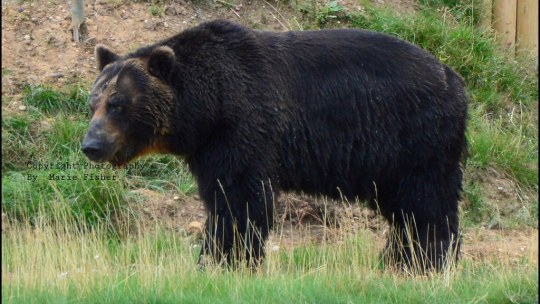
Also known as the Ezo Brown bear or Black Grizzly bear, this subspecies of Eurasian Brown Bear is one of the largest, with some individuals approaching the Kodiak Bear in size.
Similar to the Kamchatka Brown Bear, it differs with an elongated skull, longer nasal bones, elevated forehead and is darker in colour with some individuals being pure black.
Siberian (Amur) tigers and other bears are it's only natural predators, with documented tiger and bear interspecific competitions. Ussuri brown bears will often scavenge tiger kills and or kill smaller tigers, while Tigers are known to hunt young and sub-adult bears (bears making a significant portion of their diet).
Graves: Louisiana Black Bear
Ursus americanus luteolus

A subspecies* of the American Black Bear (U. a. americanus), the Louisiana Black Bear has been historically found in Louisiana, Mississippi, East Texas and Arkansas.
It is not substantially different from the American Black Bear, though it has a longer, flatter, narrower skull and larger molars in comparison. It's colouration is typically black, though some individuals have been known to be brown/red-brown cinnamon. It is Louisiana's official state mammal.
*The validity of this subspecies has been repeatedly debated.
Valeria: Sloth Bear "Indian Bear"
Melursus ursinus
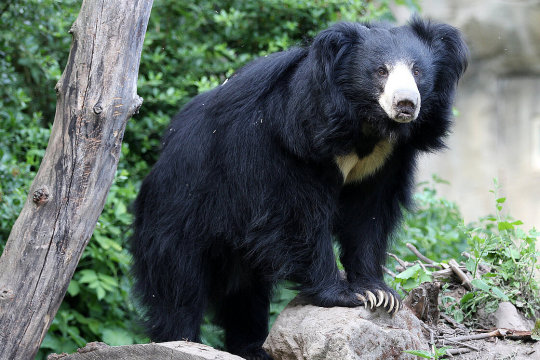
A native species to the Indian Subcontinent, this medium sized bear feeds on ants, termites and fruit. It is also called the "labiated bear" due to its long lower lip and palate which is used to eat insects.
It's fur is pure black aside from the white "Y" or "V" patch on its chest though this can be absent in some individuals. They are similar in size with the Asian Black Bear though distinguished with it's shaggy mane, white 'sickle' claws, and rangier build.
This species is the most aggressive to humans with the largest number of recorded attacks due to a combination of close human cohabitation and a theorised predisposition to aggressive behaviour from constant attacks by tigers, leopards, rhinos and elephants.
Captain Williamson in his Oriental Field Sports (1819) wrote of how sloth bears rarely killed their human victims outright, but would suck and chew on their limbs till they were reduced to bloody pulps.
They are not known to be man eaters despite attacking humans. One individual in Mysore (Mysuru), India was recorded to have killed at least 12 people and mutilated 24 before it's death in 1957.
Shepherd: Koala "Koala Bear"**
Phascolarctos cinereus
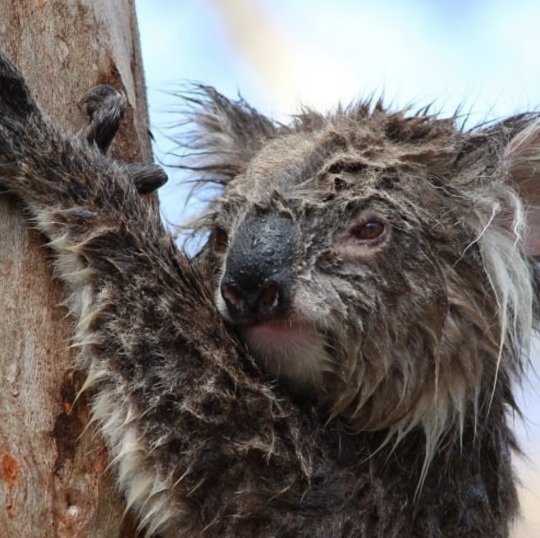
**not a bear
An arboreal marsupial native to Australia that feeds primarily on Eucalyptus leaves. Koalas are asocial with bonding only taking place between mothers and dependant offspring. They are largely sedentary and will sleep upwards to 20 hours a day.
The word "koala" came from the Dharug word "gula" - no water. The 'u' sound was originally written phonetically as 'oo' and then became 'oa'. The three syllable pronunciation may be erroneous as a result.
White settlers adopted the 'koala' indigenous loan word in reference to the animal, where it was also referred to as, the "native bear", or the "koala bear" due to its supposed bear-ish resemblance.
+
Info from Wikipedia. Please let me know if I screwed up somewhere. 🐻
#cod mwiii#cod mwii#call of duty modern warfare#call of duty#vladimir makarov#cod makarov#phillip graves#graves cod#valeria garza#valeria mw2#general shepherd#bears#bear facts#cod mw2#cod mw3
49 notes
·
View notes
Text
Oh, the irony of the followers of a fascist ideology, whose founder was a bootlicker for the British, insulting someone who actually died fighting the British. What a fucking joke this country has become
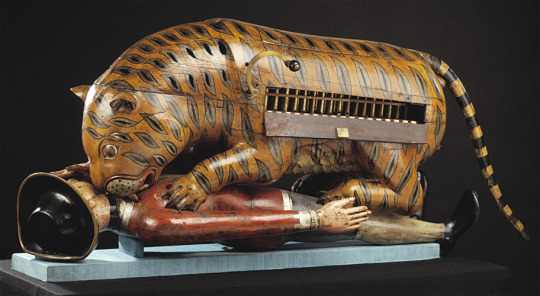
Remember Tipu Sultan, the Tiger of Mysore
#tipu sultan#india#original post#not incorrect quotes#desiblr#desi tumblr#desi tag#desi stuff#desi#islamophobia#british colonialism#colonialism
41 notes
·
View notes
Text
I’m kinda bored
So I’m going to talk about animals who have eaten humans
These animals are called ‘man-eaters’ and actually hunt for people. Of course a lot of man eaters are flesh eating animals. Because yea. Humans are made out of flesh
I’ll be talking about these few animals:
The beast of Gevaudan
The man eaters of Njombe
Kesagake the Sankebetsu bear
The leopard of Rudraprayag
The sloth bear of Mysore
The tigers of Chowgarh
The Tsavo man eaters
Man eaters of Kumaon
So yea, if you want to read about animals eating people, go ahead and wait here for a bit. If you want, you can read the meat eating horses post since it is quite similar to the other animals
6 notes
·
View notes
Text

Book review - Loot by Tania James
This one turned out to be a lot more boring than it seemed. It is a about a young, talented woodworker named Abbas from Srirangapatna, Mysore, whose work catches the eye of Tipu Sultan. Tipu Sultan enlists Abbas to work for him, under the apprenticeship of a French clockmaker named Lucien Du Leze. Together, they build a one-of-a-kind musical automaton of a tiger killing a British soldier, which is later stolen as a war prize when the British attack Mysore and kill Tipu Sultan. Abbas later moves to France, where he learns that the tiger has been given to the wife of one of the British soldiers. He goes to England with Jehanne, a girl he knew from his childhood that also went to France, to try and get the tiger back.
..............................................................................................................................
I thought this book had a very interesting concept, but there are huge gaps in time left unexplained, random deaths that didn't make much sense, and an anticlimactic ending (its described as a heist novel but Abbas and Jehanne ultimately don't get the Tiger back, and for all his prodigious talent Abbas becomes a dollmaker). It did have a wry sense of humor that I enjoyed, though.
5 notes
·
View notes
Text
Exploring Bangalore's Historic Landmarks and Staying at the Best Hotels Nearby

Bangalore is often called the "Garden City" of India. It is a vibrant blend of history, culture, and modernity. The city is known for its lush green parks, IT hubs, and vibrant nightlife. However, it also boasts an array of historic landmarks that tell the tales of its rich heritage. Whether you are a history enthusiast or you want to take a peace of mind in a quieter place, Bangalore's historical landmarks as well as the best accommodations available. Discover Bangalore's historic places with the best hotels in the city.
Must Visit Historic Landmarks in Bangalore
1. Bangalore Palace
Bangalore Palace reminds of the grandeur style that is Tudor, inspired from Windsor Castle in England. It was constructed back in 1878; with sprawling gardens, and intricate carvings of woodwork, and is quite elaborate. This palace brings the luxurious life of the Wodeyar dynasty in front of one's eyes.
Nearest Hotels:
Hotel Kingston: This hotel can easily be found near and features spacious rooms in Bangalore for relaxing stays with modern comfort in hand.
Aiden by Best Western Hennur: Just a short drive away, this couple-friendly hotel in Bangalore blends luxury with convenience.
2. Tipu Sultan's Summer Palace
This is one such Indo-Islamic architectural jewel that the Tipu Sultan, surnamed "Tiger of Mysore," took as a summer abode. Composed strictly of teakwood, the structure stands tall and is decorated by majestic frescoes and fabulous pillars testifying to Tipu Sultan's reign.
Nearby Hotels:
Hotel Orange Park: ideal for travelers who need comfortable and affordable accommodations. It is therefore a good choice for travelers touring in this city.
3. Lalbagh Botanical Garden
This 240-acre garden remains a haven for both nature lovers and history enthusiasts. It was the brainchild of Hyder Ali, who further upgraded it as Tipu Sultan. The flora here are unique, and it houses the excellent glasshouse inspired by the Crystal Palace in London.
Nearby Hotels :
Hotel 4Season Suites: This hotel features small rooms and friendly staff, providing access to Lalbagh and many more attractions.
4. Vidhana Soudha
This legislative building is an excellent example of Neo-Dravidian architecture. As the largest legislative building in India, it has detailed and majestic architecture, making it a significant landmark.
Hotels Near:
Hotel Sterling Inn: This hotel is elegant as well as comfortable. It offers preference among business and leisure travelers too.
5. Nandi Hills
Just outside Bangalore, Nandi Hills is a mix of history and natural beauty. It is known for its ancient temples and fortresses but also offers breathtaking views and serene trekking trails. From regal palaces to lush gardens, Bangalore's historic landmarks offer a unique blend of history, culture, and beauty, making it a destination worth exploring for history enthusiasts and travelers alike.
Nearby Hotels and Resorts :
Hotel Avenue Suites: This hotel is near International Airport Bangalore: Strategically chosen for the traveler who has a purpose for reaching Nandi Hills, this hotel combines convenience with top-of-the-line facilities.
Why Book Hotels in Bangalore with Qwiksta?
Qwiksta makes booking the ideal accommodation for your trip a breeze. Be it budget-friendly rooms in Bangalore, couple-friendly hotels, or the best resorts in Bangalore, Qwiksta has got you covered. Here's why Qwiksta stands out:
1. High Number of Choices: From boutique hotels to high class resorts around Bangalore, Qwiksta will surely have something for each one of you.
2. Friendly User Interface: Quickly search and compare hotels based on what matters most to you from being close to the city's historic landmarks to available amenities.
3. Reviews Authenticated: Ensure the information with honest reviews and ratings.
4. Deals: Get discounts and exclusive deals on top hotels like Hotel Orange Park, Hotel 4Season Suites, and more.
Plan Your Perfect Getaway
These historical sites are not only windows to the past but also avenues that make understanding Bangalore's cultural fabric possible. Use these as an avenue for further exploration with comfortable accommodations provided through a myriad of hotels in Bangalore as per Qwiksta's recommendation. For a short break or even long vacations, this would truly make all the difference in experiencing the city right.
So, pack your bags and get ready to discover the treasures of the Garden City. From the regal Bangalore Palace to the serene Nandi Hills, from budget-friendly options like Hotel Kingston to luxurious retreats in resorts near Bangalore, Qwiksta ensures that your stay is as memorable as your journey.
#hotels in bangalore#resorts in bangalore#best resorts in bangalore#resorts near bangalore#best hotels in bangalore
0 notes
Video
youtube
WHITE TIGER VS BENGAL TIGER
#youtube#Wildlife#Jingle Animals#Mammals#Carnivores#Apex Predtors#Tiger#White Tiger#Bengal Tiger#Black Stripes On Body#Mysore Zoo#Animaks In Mysore Zoo#Big Cats#Hunt Live Prey#Hide Prey
1 note
·
View note
Text
Discover the Charm of Karnataka with Tailored Tour Packages

Karnataka, a state that beautifully blends natural beauty, rich heritage, and modernity, is a treasure trove for travelers. Whether you're drawn to the historic sites of Hampi, the serene backwaters of Kabini, or the vibrant city life of Bangalore, Karnataka Tour Packages offer something for everyone. With its diverse landscapes and cultural richness, Karnataka promises unforgettable experiences for solo travelers, couples, and families alike.
One of the highlights of Karnataka Travel Packages is the chance to explore the Western Ghats. These lush green hills are home to numerous trekking trails, coffee plantations, and wildlife sanctuaries. Coorg, famously known as the Scotland of India, is a must-visit destination for nature enthusiasts. Adventure seekers can also explore the beautiful beaches of Gokarna or the majestic Jog Falls, which are among the highest waterfalls in the country. Such attractions make Karnataka Trip Packages a perfect blend of relaxation and adventure.
Heritage lovers will find themselves captivated by Karnataka's historic monuments. Hampi, a UNESCO World Heritage Site, offers a glimpse into the grandeur of the Vijayanagara Empire with its ancient temples and ruins. Mysore, known as the City of Palaces, showcases the royal charm of Karnataka with the iconic Mysore Palace and its Dasara celebrations. For travelers looking to delve deeper into the state’s history, Karnataka Tourism Packages provide well-crafted itineraries that include visits to Belur, Halebidu, and Srirangapatna.
The cultural richness of Karnataka extends to its vibrant festivals, art forms, and cuisine. From the lively festivities of Rajyotsava to the traditional dance-drama Yakshagana, Karnataka is a hub of cultural experiences. Food enthusiasts can savor local delicacies like Bisi Bele Bath, Mysore Pak, and Mangalore fish curry, ensuring that your Karnataka Journey Packages are as much about flavors as they are about sights.
Wildlife enthusiasts will be thrilled with the state’s many national parks and wildlife sanctuaries. Nagarhole National Park, Bandipur Tiger Reserve, and Dandeli Wildlife Sanctuary are some of the prime spots for spotting diverse flora and fauna. These destinations, included in many Karnataka Tour Packages, provide an opportunity to connect with nature and experience the untamed beauty of the state.
For a seamless travel experience, Skyway Tour offers a variety of Karnataka Tourism Packages catering to different preferences and budgets. Their packages ensure that every aspect of your trip, from accommodation to sightseeing, is meticulously planned. Whether you're seeking a short getaway or a detailed exploration of the state, Karnataka Journey Packages from Skyway Tour are designed to make your trip hassle-free and memorable.
Karnataka is a land of endless possibilities, offering a harmonious blend of history, nature, and culture. From the cosmopolitan vibe of Bangalore to the spiritual serenity of Shravanabelagola, there’s something for every traveler. With expertly curated Karnataka Travel Packages, you can uncover the best of this incredible state and create memories that last a lifetime.
0 notes
Text
Hidden Treasures of Karnataka: Explore These Lesser-Known Gems
Karnataka, with its diverse landscapes and rich history, truly embodies its tagline, "One State, Many Worlds." Beyond the well-known destinations of Hampi, Coorg, and Mysore, Karnataka offers many hidden gems that are perfect for road trippers. Let's explore ten lesser-known destinations that every traveler should consider adding to their itinerary:
1. Sirsi

Sirsi is an enchanting town in the Uttara Kannada district, surrounded by the Western Ghats’ lush forests and home to numerous waterfalls and temples. Once known as Kalayanapattanam, this town offers not just natural beauty but also a glimpse into Karnataka's rich heritage. The heavy monsoons here nurture the vibrant tropical forests, making it a perfect getaway for nature lovers.
Top Attractions: Shri Marikamba Temple, Banavasi, Sahasralinga, Muregar Falls, Gudavi Bird Sanctuary.
Best Time to Visit: October to March.
Things to Do: Explore the serene waterfalls, visit heritage temples, and enjoy picnics amidst nature.
Places to Stay: Options range from homestays to hotels, including Akshay Garden, Ibbani Jungle Resort, and Hotel Panchavati.
2. Maravanthe

Imagine driving on a highway with the sea on one side and a river on the other. This surreal experience is what Maravanthe offers. With the golden sands of its beaches and the scenic backdrop of the Kodachadri Hills, this is a destination like no other.
Top Attractions: Maravanthe Beach, Padukone Village, Kodi Beach.
Best Time to Visit: September to March.
Things you can Do: Try scuba diving and snorkelling at the beach, or simply relax and enjoy its beauty.
Places to Stay: Beach resorts and homestays like Saikushi Beach Resort and Hotel Jewel Park offer comfortable accommodations.
3. Jogimatti Forest

Jogimatti Forest, located in Chitradurga, spans over 10,000 hectares and was once a tiger habitat. Rich in wildlife and waterfalls, this forest reserve is perfect for adventure seekers. The area is named after a saint, and visitors can explore the local temple, British-era bungalow, and the scenic beauty that surrounds it.
Top Attractions: Himavat Kedaya Waterfall, Chandravalli Lake, Adumalleshwara Zoo.
Best Time to Visit: October to March.
Things to Do: Go trekking, visit caves, or take in the stunning views of the forest.
Places to Stay: Stay options include forest department guest houses and camps like Jogimatti Trekkers Camp.
4. Netrani Island

Off the coast of Karnataka lies Netrani Island, also called "Pigeon Island." With its heart-shaped appearance and crystal-clear waters, it’s a favourite for scuba diving enthusiasts. Dive into the Arabian Sea to witness stunning coral reefs and vibrant marine life.
Top Attractions: Netrani Island cave, Netrani Beach.
Best Time to Visit: October to May.
Things to Do: Scuba diving, boating, and exploring underwater marine life, including butterflyfish, eels, and shrimps.
Accommodations: Select from beach resorts and homestays such as Namaste Nirvana Beach Retreat and Mavalli Beach Heritage Home.
5. Mulki
Tucked away on Karnataka's coast, Mulki is a paradise for water sports lovers. With soft sandy beaches, mangroves, and bioluminescence at night, this quiet town is perfect for those seeking adventure. Known as India’s best surfing spot, Mulki attracts surfers, kayakers, and wakeboarders from around the world.
Top Attractions: Sasihithlu Beach, Bappanadu Temple.
Best Time to Visit: October to May.
Things to Do: Surfing, kayaking, wakeboarding.
Places to Stay: Aventura Indica, Caribbean Mulki, and Mulki Staycation Homestay offer comfortable lodging.
6. Honnemaradu

Overlooking the Linganamakki Dam, Honnemaradu is a quiet village perfect for a peaceful getaway. Surrounded by greenery and backwaters, it’s a haven for birdwatchers and offers activities like windsurfing and canoeing. The sunrises and sunsets here are simply breathtaking.
Top Attractions: Honnemaradu Reservoir, Dabbe Falls, Singadooru Chamundeshwari Temple.
Best Time to Visit: August to January.
Activities include: hiking, backwater swimming, windsurfing, kayaking, and camping.
Places to Stay: Adventure camps in Honnemaradu or hotels in nearby Sagara offer lodging options.
7. Kumta

Nestled between green forests and the Arabian Sea, Kumta is known for its scenic beauty, ancient temples, and pristine beaches. Whether you want to visit the mysterious Yana Caves or relax on the peaceful shores of Kumta Beach, this town offers a perfect balance between spirituality and nature.
Top Attractions: Yana Caves, Mirjan Fort, Dhareshwar Beach.
Best Time to Visit: November to February.
Things to Do: Explore the caves, enjoy the secluded beaches, and soak in the local culture.
Places to Stay: The Naavika Beach Stay, Silver Sand Beach Resort, Blue Marine Resort.
8. Honnavar

For those who love the rains, Honnavar is a must-visit during monsoon. This port town is famous for its dense mangrove forests and unspoiled beauty. With waterfalls and scenic bridges, it offers a tranquil experience away from the crowds.
Top Attractions: Apsarakonda Waterfall, Hanging Bridge, Eco Beach.
Best Time to Visit: September to March.
Things to Do: Boating through the mangrove forests, enjoying traditional dance performances like Yakshagana.
Places to Stay: Areca County, Panchavajra Homestay, Honnavar Nature Camp.
9. Agumbe

Known for its abundant rainfall and stunning sunsets, Agumbe is a UNESCO World Heritage Site and a nature lover’s dream. Its verdant landscapes, biodiversity, and sparkling streams make it one of the best spots to visit in Karnataka. The area is also famous for being home to the King Cobra.
Top Attractions: Onake Abbi Falls, Someshwara Wildlife Sanctuary, Sunset View Point.
Best Time to Visit: October to February.
Things to Do: Trekking, wildlife exploration, and enjoying the scenic sunsets.
Places to Stay: Mithila Nature Stay, Ammadi Home Stay, Seethanadi Nature Camp.
10. Apsarakonda

Apsarakonda is a hidden gem with a waterfall, a pristine beach, and stunning views from the hilltops. Perfect for those who love quiet retreats, it’s a lesser-known beauty spot that will make you feel like you’re in Bali.
Top Attractions: Apsarakonda Waterfall, Apsarakonda Beach.
Best Time to Visit: June to October.
Things to Do: Hike through the waterfalls and relax on the beach.
Places to Stay: The nearest town, Honnavar, offers homestays and camps.
To visit Karnataka, you need to apply for an India e visa that helps you to enter and stay in India. An Indian e visa is an electronic visa that can be applied online for tourism, business, or other purposes. This visa helps you to avoid the traditional way and you can apply online anywhere with the help of the internet. You can apply for a Tourist visa for 30 days, 1 year or 5 years for Single, Double and Multiple entries.
Conclusion
Karnataka has so much more to offer than just its famous tourist spots. Whether you’re an adventurer, a beach lover, or someone who seeks quiet retreats in nature, these hidden gems provide the perfect escape from the everyday. So pack your bags and get ready to explore the unexplored!
#karnataka#tourismplaceskarnataka#karnatakatourismspots#touristdestinationskarnataka#karnatakatouristplacestovisit#evisasindia#travel#karnatakatourism#evisaforindia#indiaevisa#etouristvisaindia#touristvisatoindia#evisaindiacost
1 note
·
View note
Text
Scientific knowledge and technology played a significant role in the expansion of colonial rule in India and the consequent incorporation of the Indian sub-continent into the [commercialized, imperial] world-system [...]. The colonization of nature, territory and people in British India led to a mutually constitutive interplay [...].
By the time the East India Company managed to establish a foothold in Bengal in 1757, [...] [a]fter the acquisition of the formal rights to collect revenues in the states of Bengal, Bihar and Orissa, the issue of obtaining accurate information about the extent of the produce, the population and other social statistics assumed significance. The detailed scientific surveys [...] were possible due to the large number of amateur scientists employed by the Company. Over time, these surveys played a major role in the transformation of a trading company into a colonial state [...] and the incorporation of India into the modern world-system. [...]
---
Considered the founder of British geography, James Rennell arrived in India in 1760 barely three years after the decisive battle of Plassey. Rennell’s cartographic skills caught the attention of the governor of Bengal presidency, who was ‘anxious to inaugurate some system for correcting and revising the geography of Bengal’ [...]. Rennell’s mapping out in great detail the area under the Company was indispensable for the rationalization of the extraction of surplus, administrative strategies and techniques of control. [...] In 1777 he left for England, and two years later he published the Bengal Atlas that led to his election to the Royal Society. [...] With reference to the ‘science wars’, [...] Rennell’s work was also incorporated in the key text[s] of the time, C. Lyell’s Principles of Geology (1830) [...] [and] the work of [...] Humboldt and Carl Ritter. Rennell’s surveys contributed to the organized [...] surveys [across wider regions of India] that followed after the defeat of Tipu Sultan of Mysore in 1799. [...] [Mysore's] sustained resistance to British power had a major impact on the general consciousness in Britain. [...]
Thomas de Quincey extolled the virtues of the ‘British bulldog’ against [...] the tyrannical ‘Bengal tiger’ [...]. The scientific knowledge that emerged as a consequence of the surveys of Mysore contributed [...] to the consolidation of administrative power [...]. The key figures associated with the surveys [included] Colin Mackenzie [...]. Mackenzie’s ethnographic notes contributed to imperial perceptions of the [...] [people of South Asia] and the grid of anthropological knowledge through which administrative power was deployed. [...]
---
Nature, culture and colonial power were inextricably implicated in the production of scientific knowledge and of colonial society. [...] The establishment the Public Works Department in 1854 provided fresh impetus for the deployment of science and technology in grappling with problems precipitated by colonial rule. Declining revenues for the Company focused attention on gigantic irrigation and other public works projects. [...]
The irrigation projects were expanded to include the railways (1849), the telegraph (1852), and the postal system (1850). Together, they represented the largest state-sponsored enterprise undertaken anywhere at that time. Lord Dalhousie, under whose tenure these projects were inaugurated, declared the railways, the telegraph and the postal system as the ‘three great engines of social improvement’.
His predecessor William Bentinck had already termed the railways ‘the great engine of moral improvement’ in a country ‘cursed from one end to the other by the vice, the ignorance, [...] the barbarous and cruel customs that have been the growth of ages under every description of Asian misrule’ [...]. Later observers were to wax ever more eloquent on the role of the railways in the modernization of India. For W. A. Rogers of the Indian Civil Service, railways ‘are opening the eyes of the people … they teach them that speed attained is time, and therefore money, saved or made’ (Adas1989: 226). The importance of a network of railways, connecting the cotton plantations of the Deccan region to the ports became significant especially during the 'cotton famine' of 1846 [...].
---
Almost immediately after Dalhousie left India, secure in the belief that the double engines of moral improvement and legitimacy were at work, the rebellion of 1857 put an end to such expectations. The rebellion was partly triggered in response to the wide-ranging transformations [...] triggered off by the introduction of [these] new [colonial infrastructures] [...].
In the end, the rebellion was violently suppressed by the very technologies that had precipitated it in the first place. [...]
---
All text above by: Zaheer Baber. "Colonizing nature: scientific knowledge, colonial power and the incorporation of India into the modern world-system". British Journal of Sociology 52(1), pages 37-58. April 2001. [Bold emphasis and some paragraph breaks/contractions added by me. Presented here for commentary, teaching, criticism purposes.]
#ecology#abolition#multispecies#landscape#geography#temporal#temporality#colonial#imperial#tidalectics#indigenous#archipelagic thinking#intimacies of four continents#plantations#carceral geography#opacity and fugitivity#indigenous pedagogies#black methodologies
38 notes
·
View notes
Text
[ad_1] Cycle Pure Agarbathi, India’s leading agarbathi manufacturer and title sponsors for Ability Sports League T20, concluded the final match, held on 16th December at Alur KSCA Ground, Yelahanka. In a thrilling final match of the 3rd edition of the league, Chennai Legends emerged victorious, defeating Bengaluru Eagles by 53 runs. The match showcased the exceptional skills and abilities of wheelchair athletes from across the region. The event was graced by the presence of Spandan Kaniyar, Sports Head & Deputy News Editor, Kannada Prabha, Mukund Shetty, Sports Head, Samyuktha Karnataka, and Krishnappa Gowtham, Indian all-rounder who represents Karnataka in domestic cricket, and marquee player of Mysore Warriors. The 3rd edition of the Ability Sports League witnessed Chennai Legends triumph over the Bengaluru Eagles Chennai Legends showcased a sensational performance, led by Suresh Selvam's explosive innings of 111 runs off just 43 balls. Despite a resilient effort from Saliesh Yadav of Bengaluru Eagles, who scored 42 runs off 28 balls, the match belonged to the Legends. Jenish Anto's outstanding bowling spell, taking 4 wickets for 24 runs in 4 overs, played a pivotal role in securing a memorable victory for the Chennai Legends. Mr. Arjun Ranga, Managing Director, Cycle Pure Agarbathi, said, “We congratulate the Chennai Legends for their brilliant performance, and all the participants for their dedication and spirit. The Ability Sports League T20 celebrates the abilities of athletes beyond physical challenges, and fosters a spirit of inclusivity, courage, and perseverance in everyone, which we hope to continue to bring to other sporting leagues.” Cycle Pure Agarbathi has made significant strides in fostering a vibrant sports culture. By supporting events including the Tiger Cup and the victorious Mysore Warriors in the 2024 Maharaja Trophy, the organization has positively impacted the local community and inspired aspiring athletes. About NRRS The Mysuru-based NRRS was founded by Shri N. Ranga Rao in 1948. A true visionary and philanthropist, Shri Ranga Rao created the ubiquitous Cycle Pure Agarbathi which has, today, become the largest-selling incense stick brand in the world. From a home-grown enterprise, NR Group has evolved into a successfully run business conglomerate with an established presence in India and abroad. The Group has diversified into various business categories like functional air care products (Lia brand of room fresheners and car fresheners), wellness home fragrance products (IRIS) under Ripple Fragrances, floral extracts (NESSO), and Rangsons Technologies. Today, it is truly an Agarbathi to Aerospace conglomerate as it is also involved in making parts for defense helicopters. The organization has largely committed to social responsibilities and fulfills them, through its charity arm ‘NR Foundation���. NR Group today is managed by the third generation of the Ranga family. For more information on NR Group, please visit www.nrgroup.co.in. !function(f,b,e,v,n,t,s) if(f.fbq)return;n=f.fbq=function()n.callMethod? n.callMethod.apply(n,arguments):n.queue.push(arguments); if(!f._fbq)f._fbq=n;n.push=n;n.loaded=!0;n.version='2.0'; n.queue=[];t=b.createElement(e);t.async=!0; t.src=v;s=b.getElementsByTagName(e)[0]; s.parentNode.insertBefore(t,s)(window,document,'script', 'https://connect.facebook.net/en_US/fbevents.js'); fbq('init', '311356416665414'); fbq('track', 'PageView'); [ad_2] Source link
0 notes
Text
[ad_1] Cycle Pure Agarbathi, India’s leading agarbathi manufacturer and title sponsors for Ability Sports League T20, concluded the final match, held on 16th December at Alur KSCA Ground, Yelahanka. In a thrilling final match of the 3rd edition of the league, Chennai Legends emerged victorious, defeating Bengaluru Eagles by 53 runs. The match showcased the exceptional skills and abilities of wheelchair athletes from across the region. The event was graced by the presence of Spandan Kaniyar, Sports Head & Deputy News Editor, Kannada Prabha, Mukund Shetty, Sports Head, Samyuktha Karnataka, and Krishnappa Gowtham, Indian all-rounder who represents Karnataka in domestic cricket, and marquee player of Mysore Warriors. The 3rd edition of the Ability Sports League witnessed Chennai Legends triumph over the Bengaluru Eagles Chennai Legends showcased a sensational performance, led by Suresh Selvam's explosive innings of 111 runs off just 43 balls. Despite a resilient effort from Saliesh Yadav of Bengaluru Eagles, who scored 42 runs off 28 balls, the match belonged to the Legends. Jenish Anto's outstanding bowling spell, taking 4 wickets for 24 runs in 4 overs, played a pivotal role in securing a memorable victory for the Chennai Legends. Mr. Arjun Ranga, Managing Director, Cycle Pure Agarbathi, said, “We congratulate the Chennai Legends for their brilliant performance, and all the participants for their dedication and spirit. The Ability Sports League T20 celebrates the abilities of athletes beyond physical challenges, and fosters a spirit of inclusivity, courage, and perseverance in everyone, which we hope to continue to bring to other sporting leagues.” Cycle Pure Agarbathi has made significant strides in fostering a vibrant sports culture. By supporting events including the Tiger Cup and the victorious Mysore Warriors in the 2024 Maharaja Trophy, the organization has positively impacted the local community and inspired aspiring athletes. About NRRS The Mysuru-based NRRS was founded by Shri N. Ranga Rao in 1948. A true visionary and philanthropist, Shri Ranga Rao created the ubiquitous Cycle Pure Agarbathi which has, today, become the largest-selling incense stick brand in the world. From a home-grown enterprise, NR Group has evolved into a successfully run business conglomerate with an established presence in India and abroad. The Group has diversified into various business categories like functional air care products (Lia brand of room fresheners and car fresheners), wellness home fragrance products (IRIS) under Ripple Fragrances, floral extracts (NESSO), and Rangsons Technologies. Today, it is truly an Agarbathi to Aerospace conglomerate as it is also involved in making parts for defense helicopters. The organization has largely committed to social responsibilities and fulfills them, through its charity arm ‘NR Foundation’. NR Group today is managed by the third generation of the Ranga family. For more information on NR Group, please visit www.nrgroup.co.in. !function(f,b,e,v,n,t,s) if(f.fbq)return;n=f.fbq=function()n.callMethod? n.callMethod.apply(n,arguments):n.queue.push(arguments); if(!f._fbq)f._fbq=n;n.push=n;n.loaded=!0;n.version='2.0'; n.queue=[];t=b.createElement(e);t.async=!0; t.src=v;s=b.getElementsByTagName(e)[0]; s.parentNode.insertBefore(t,s)(window,document,'script', 'https://connect.facebook.net/en_US/fbevents.js'); fbq('init', '311356416665414'); fbq('track', 'PageView'); [ad_2] Source link
0 notes